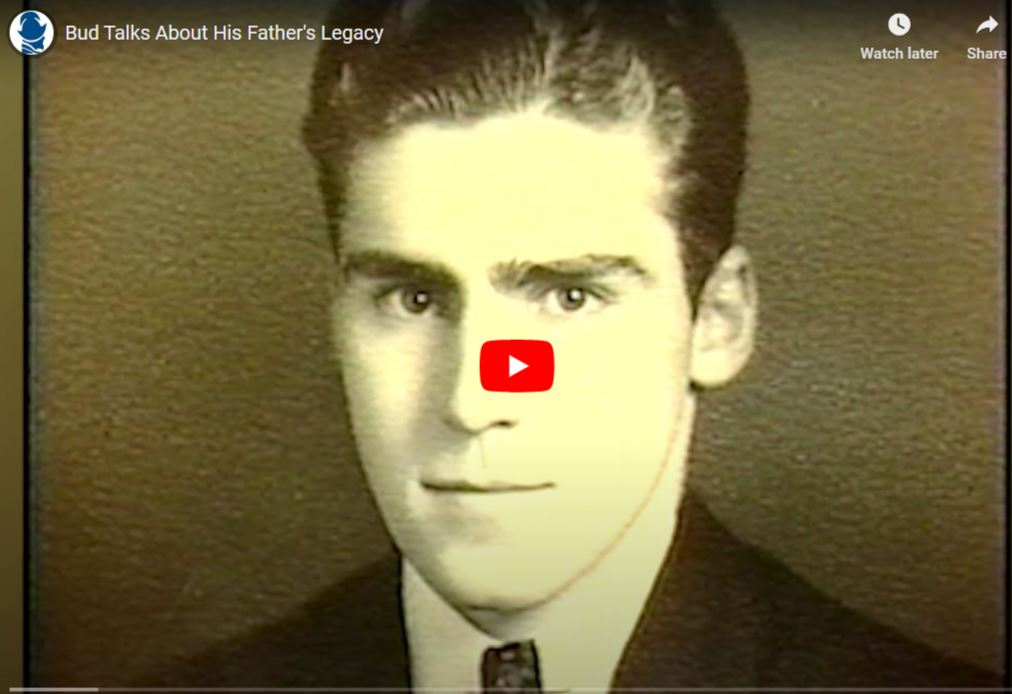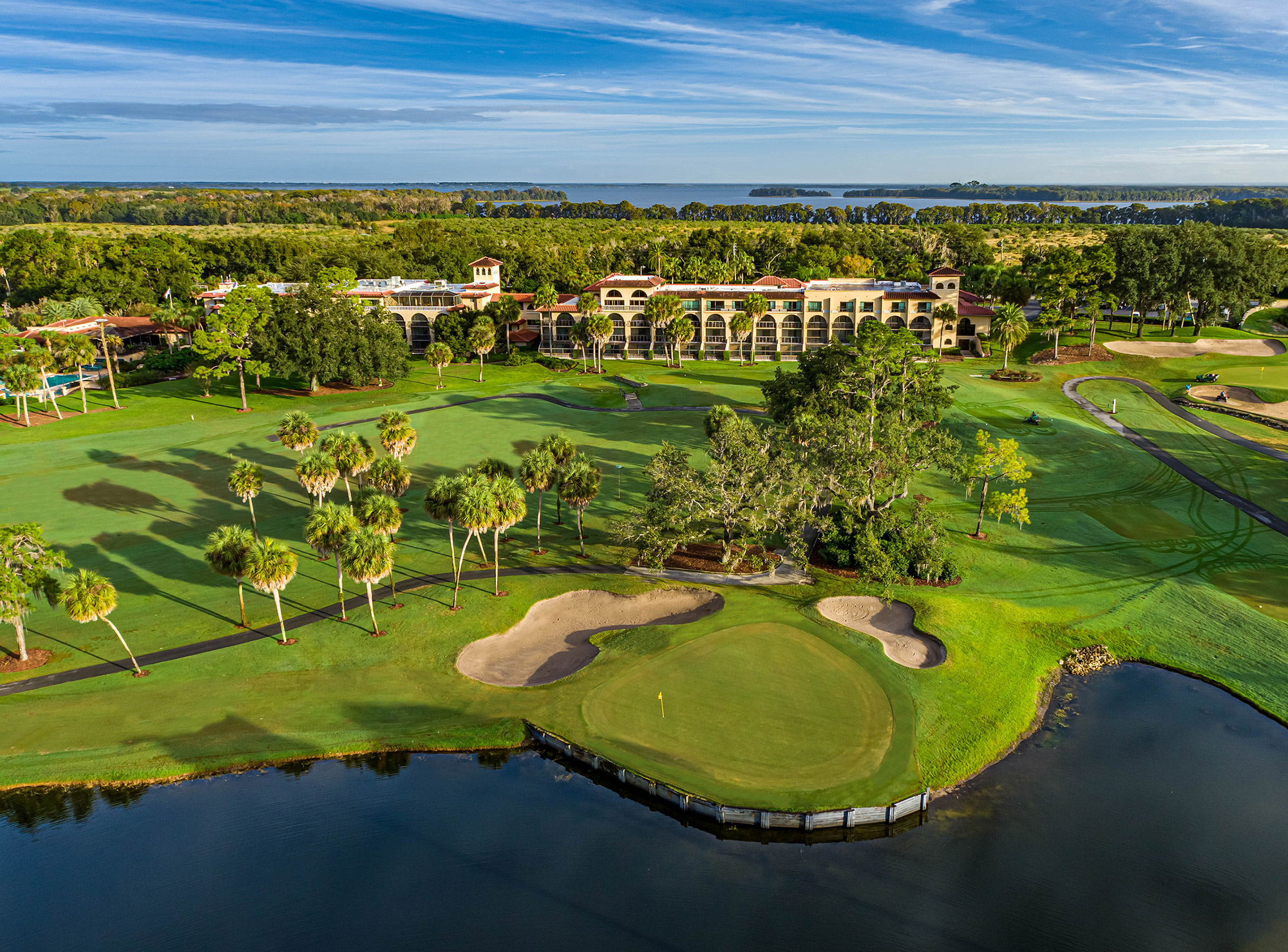Receive for Free - Discover & Explore eNewsletter monthly with advance notice of special offers, packages, and insider savings from 10% - 30% off Best Available Rates at selected hotels.
history
Discover Mission Resort + Club, which was born out of a historic golf facility that harkens back to the early 20th century.
Mission Resort + Club, a member of Historic Hotels of America since 2023, dates back to 1964.
VIEW TIMELINE
Bud Talks About His Father's Legacy
The Mission Resort + Club is a direct reflection of Nick Beucher's vision, as well as the tireless effort of the Beucher family and the resort’s dedicated employees! The Beucher and Mission Resort families invite the guests to learn more about Beucher’s legacy.
WATCH NOWIn 1916, an aspiring horticulturalist named William J. Howey acquired around 60,000 acres of densely wooded land just outside of Orlando, Florida. Not yet the popular vacation destination it is today, the greater region surrounding the city was then prime real estate for growing various tropical crops. Citrus fruit in particular ranked among the most cultivated produce at the time, with local farmers often making considerable profits. Howey thus decided to establish his own agricultural operation near Orlando, hoping that it could even become a national brand. He subsequently cleared his massive estate of all vegetation and started constructing a series of commercial buildings to help run the business. However, Howey also began contemplating ways to gain additional investors and soon developed a few recreational attractions to gain their attention. Perhaps the most noteworthy of Howey’s creations was an inn known as the “Floridan Hotel” (no longer standing), as well as an accompanying golf facility that he christened as the “Chain-O-Lakes Country Club.” Designed by Chicago-based golf course architect George O’Neil, the country club was the more stunning of the two. Indeed, many golfers in Florida hailed the country club’s golf course to be one of the best in the whole state, due to its spring-fed lakes, verdant scenery, and tee-to-green elevations of 85 feet.
Much to Howey’s delight, the Chain-O-Lakes Country Club became inundated with visitors in a matter of months, all of whom were eager to test their skills on its golf course. The mounting popularity eventually led to the golf course undergoing extensive renovations during the 1920s, too.! Howey himself experienced considerable success, as his citrus farms had generated a fine income for him. He continued to reinvest in the burgeoning business, culminating with his creation of Florida’s first-ever citrus juicing plant. Howey even founded his own town right in the middle of his estate, calling it “Howey-in-the-Hills.” But unfortunately for Howey, the Great Depression significantly impacted his citrus empire when the financial calamity befell the nation during the early 1930s. Facing ruin, he closed his numerous farms and other businesses, including the Florida Chain-O-Lakes Country Club. Although Howey never revived his grand citrus operation, the golf course would eventually reopen and endure for years under different owners. (The club specifically survived the economic crisis thanks to the masterful efforts of its memorable caretaker, Captain Charles E. Clarke.)
Meanwhile, several hundred miles away in Illinois, an equally impressive entrepreneur named Nick Beucher started working at the Morton Salt Company. Beucher proved to be a talented salesman, becoming one of the corporation’s top performers within four years. The young man was also an avid horse rider, but he suffered a terrible accident while competing in a rodeo. Despite the traumatic nature of the incident, Beucher nonetheless remained passionate about animals for the rest of his life. In fact, he eventually left his job upon recovering, opting to pursue a lucrative career in the livestock industry. Then, in 1964, Beucher noticed an advertisement in the Wall Street Journal that listed the sale of Howey’s erstwhile golf compound, now known as the “Floridan Country Club.” Noticing that it was in dire need of restoration, Beucher felt compelled to purchase the historic complex and save it. Extensive construction projects commenced throughout the Floridan Country Club not long thereafter, lasting five years in total. Nevertheless, the work that Beucher and his team accomplished was nothing short of spectacular, having brilliantly revitalized the character of the club’s historic facilities.
Intent on further preserving the site’s heritage, Beucher then chose to transform the entire compound into a world-class resort. Central to his plan was the development of a fantastic hotel, designed to reflect a wonderful blend of Spanish Colonial motifs. (Beucher specifically drew his inspiration from the architectural styles he observed during a trip to Mexico that happened after his accident.) Debuting as the “Mission Inn Resort & Club” in 1970, Beucher’s stunning resort immediately emerged as one of the most elite holiday retreats in Florida. Its success even empowered Beucher and his family to continue expanding the resort’s available services, including the creation of a second golf course, a full-service spa, three restaurants, and 30,000 square-feet of meeting space. Mission Resort + Club has since retained its revered reputation, hosting thousands of enthusiastic guests each year. Many arrive to experience the resort’s exquisite golf courses, which bear a coveted listing in the Florida Department of State’s “Florida Historic Golf Trail.” Even though the Beucher family is no longer affiliated with the location, the new dedicated owners—MMI Hospitality Group—are very committed toward protecting the legacy that they left behind. Few places in Florida are better for a memorable vacation than the historic Mission Resort + Club.
-
About the Location +
Located along the shoreline of picturesque Little Lake Harris, the quaint town of Howey-in-the-Hills is only a half-hour drive from the major metropolis of Orlando, Florida. Like Howey-in-the-Hills, the history of Orlando is very fascinating. The city itself first emerged during the mid-19th century, although the Timucua and Seminole people inhabited the space for generations prior. (The same is true for the greater Orlando metropolitan area, including the modern-site of Howey-in-the-Hills.) However, Orlando was then just a small community that had materialized around a remote U.S. Army base known as “Fort Gatlin.” Residents had even originally called the nascent village “Jernigan” after the region’s first Euro-American settler, Aaron Jernigan. Growth stayed stagnant for the next several years, too, with just a handful of families settling in the town. But the settlement finally rose in prominence once state legislators opted to place a county courthouse downtown during the 1850s. Renaming the municipality as “Orlando” in 1857, local officials began reconstructing its street grid to accommodate its newfound political significance. The name “Orlando” itself was derived from Orlando Reeves, a U.S. soldier who was killed while fighting in the earlier Seminole Wars.
This development nearly came to an abrupt end when the American Civil War erupted, as the Union naval blockade of Florida greatly reduced the commerce Orlando enjoyed with neighboring coastal towns. Nevertheless, Orlando subsequently underwent a period of prosperity that lasted for decades in the years following the conflict. Often remembered as the city’s “golden age,” Orlando saw its economy expand rapidly thanks to the emergence of the famous Floridian citrus industry in the surrounding countryside. Dozens of people established their own fruit groves on the periphery of the city’s borders, making the area one of the prime locations for citrus cultivation. Numerous other operations opened as a result, such as juice refineries, packaging plants, and shipping companies. Great wealth flowed into Orlando in turn, which helped enlarge its size considerably. Unfortunately for the city though, the dominant era of Orlando’s citrus industry came to a close when a damaging cold front overtook the region amid the winter of 1894—1895. (Historical sources have since remembered this time as the “Great Freeze.”) Many private farmers never recovered from the weather event and relocated to communities elsewhere in Florida. In their wake arrived a few business tycoons, who gradually consolidated the remaining farms under their control.
With only a handful of large citrus farms left in operation, movement to Orlando had slowed yet again by the beginning of the 20th century. But the mounting popularity of land speculation in Florida managed to reverse the city’s sagging economic fortunes. Real estate magnates had started to gradually acquire large tracts of wilderness, which they cleared to build a variety of commercial and residential structures. Orlando became one of the most active areas for this construction, in part due to its tranquil climate and proximity to numerous lakes. The community thus turned into a popular holiday destination, with many upscale hotels and resorts dotting its skyline. (Other areas nearby, such as Howey-in-the-Hills, were affected by this economic activity, too.) Although the outbreak of the Great Depression temporarily blunted this transformation, Orlando nonetheless continued to be a major travel hotspot for the rest of the century. Perhaps the greatest event affirming Orlando’s status within the tourism industry was the decision of The Walt Disney Company to debut its Walt Disney World entertainment complex nearby in 1971. Walt Disney World soon gained an renowned international reputation for its extensive services, eventually becoming the most visited vacation compound in the world during the early 21st century.
Orlando itself has remained one of Florida’s most exciting places to visit, entertaining countless guests from across the globe every year. In fact, some 74 million people travel to Orlando annually, leading to many people identifying the city as the top tourist destination in the whole United States. Central to this enduring legacy are the celebrated theme parks that reside in Walt Disney World, as well as its comparatively newer competitor, Universal Orlando. However, the city boasts a number of other outstanding amusement facilities, such as SeaWorld Orlando, Legoland, and Fun Sport America. Even though some of those locations are historic in their own right, more conventional cultural heritage attractions exist within Orlando, as well. Among the best historic sites in Orlando include the Harry P. Leu Gardens, Lake Eola Park, the Orlando Museum of Art, and the Charles Hosmer Morse Museum of American Art. But many more places to explore are situated right outside the city, too, such as the Central Florida Zoo & Botanical Gardens in Sanford and the historic Howey Mansion complex in Howey-in-the-Hills. Cultural heritage travelers are certain to experience a memorable trip when visiting the greater Orlando area as such.
-
About the Architecture +
When Nick Beucher went about renovating the Floridan Country Club during the 1960s, he chose to institute Spanish Colonial Revival architecture throughout the entire compound. Also known as “Spanish Eclectic,” Spanish Colonial Revival-style architectural form is a representation of themes typically seen in early Spanish colonial settlements. Original Spanish colonial architecture borrowed its design principles from Moorish, Renaissance, and Byzantine forms, which made it incredibly decorative and ornate. The general layout of those structures called for a central courtyard, as well as thick stucco walls that could endure Latin America’s diverse climate. Among the most recognizable features within those colonial buildings involved heavy carved doors, spiraled columns, and gabled red-tile roofs. Architect Bertram Goodhue was the first to widely popularize Spanish Colonial architecture in the United States, spawning a movement to incorporate the style more broadly in American culture at the beginning of the 20th century. Goodhue received a platform for his designs at the Panama-California Exposition of 1915, in which Spanish Colonial architecture was exposed to a national audience for the first time. His push to preserve the form led to a revivalist movement that saw widespread use of Spanish Colonial architecture throughout the country, specifically in California and Florida. Spanish Colonial Revival-style architecture reached its zenith during the early 1930s, although a few American businesspeople continued to embrace the form well into the latter half of the 20th century.































